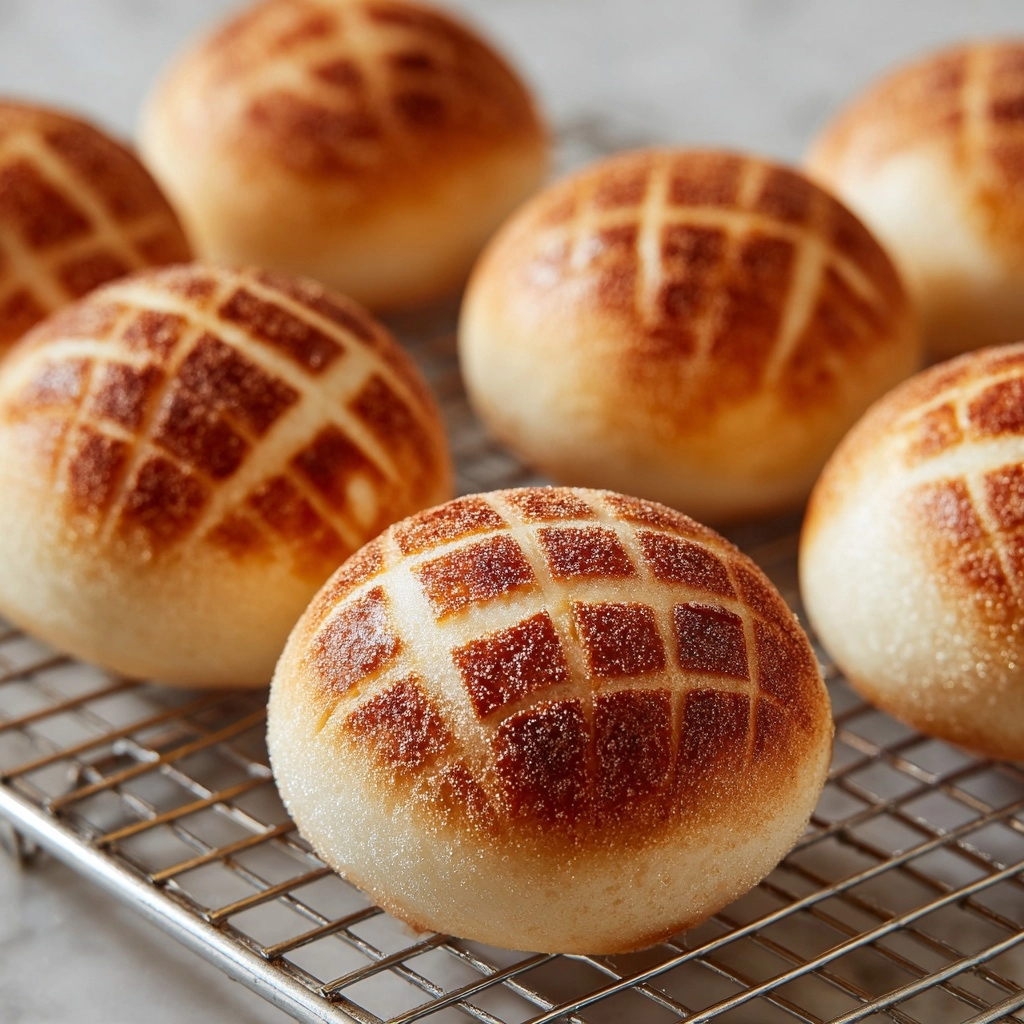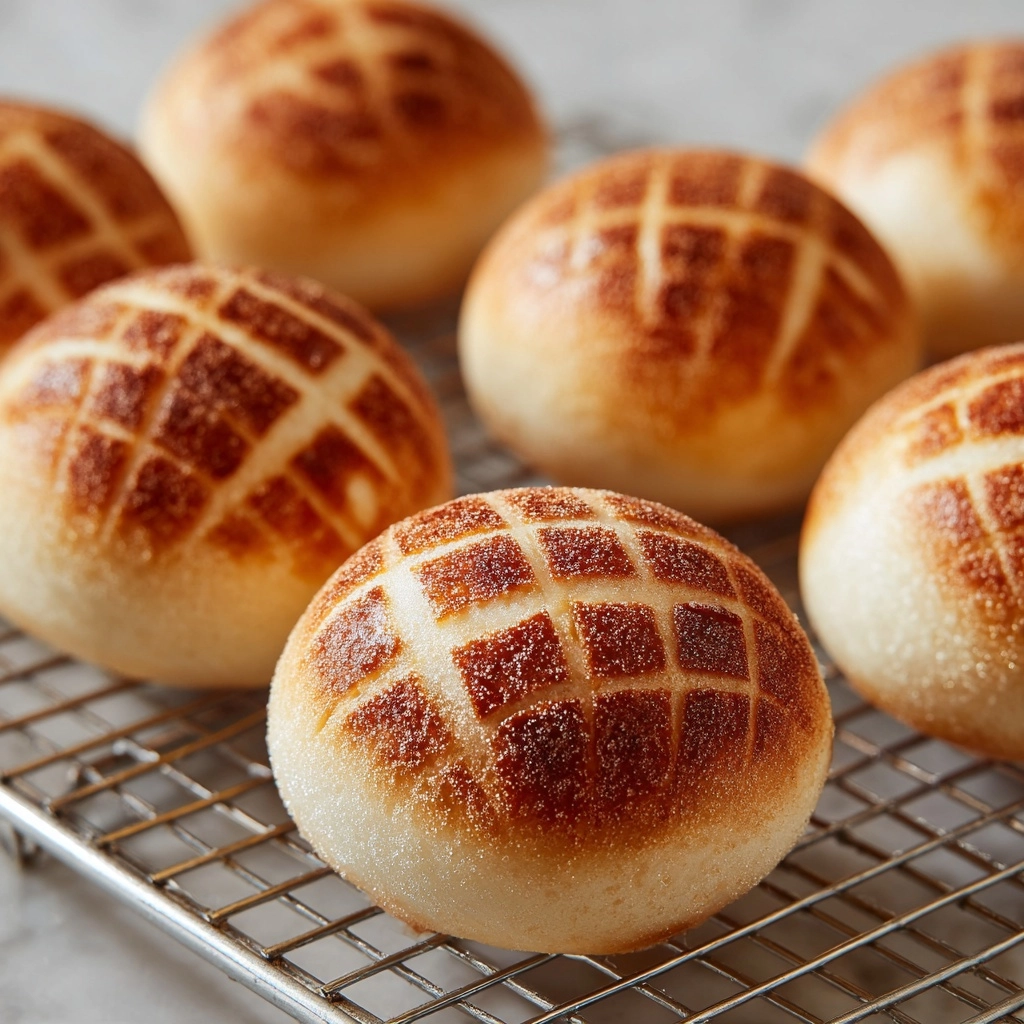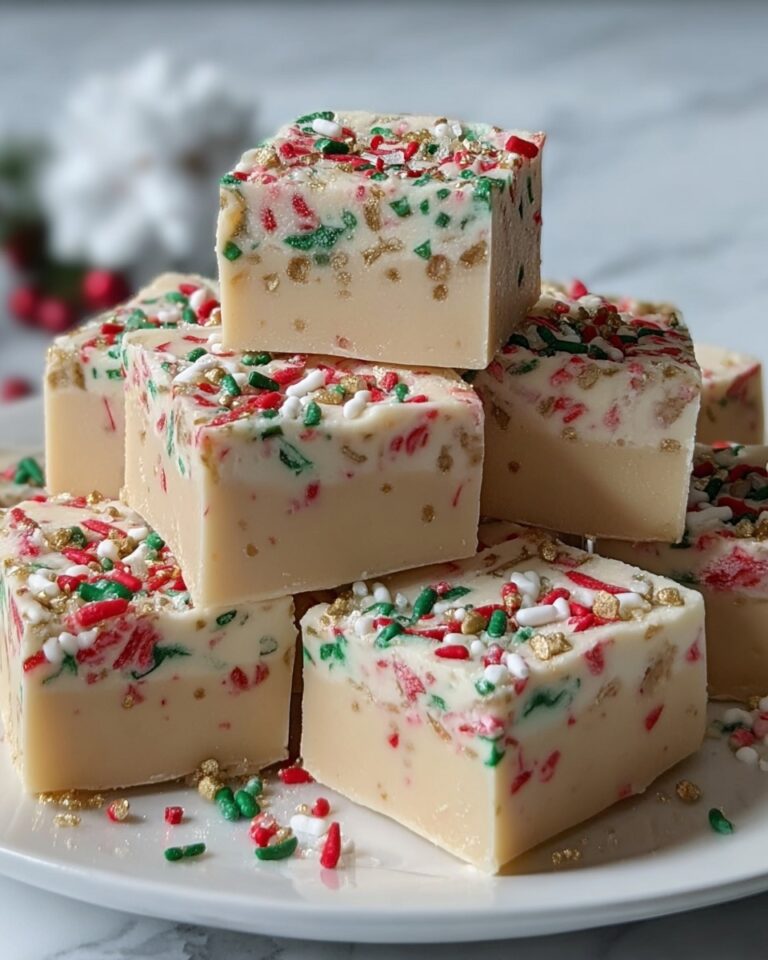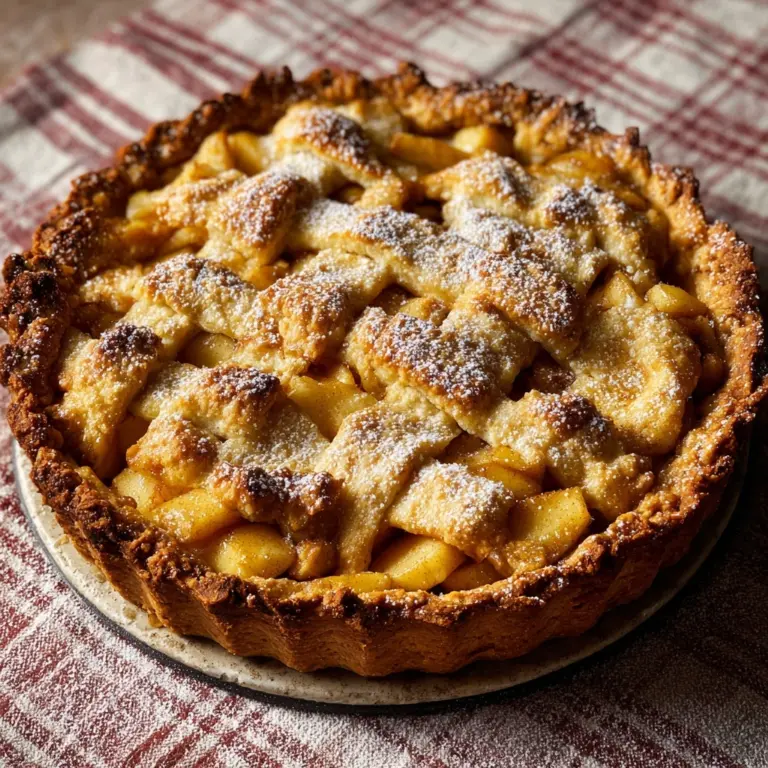There’s something utterly captivating about Classic Japanese Melon Pan—the beloved bakery treat that’s equal parts pillowy soft bread and sweet, crackly cookie crust. This dreamy hybrid of textures will seduce your senses from the very first bite, with its golden shell, delicate sugar crunch, and tender, buttery center. Whether you grew up lining up at a bakery for a fresh one (still warm from the oven) or are just discovering its magic, this iconic Japanese bun is a joy to bake at home and even more delightful to eat.

Ingredients You’ll Need
The beauty of Classic Japanese Melon Pan truly shines through its humble, everyday ingredients. Each element plays a crucial role—creating a perfectly fluffy crumb, a flavorful cookie crust, and that irresistible signature aroma we all know and love.
- Bread flour: High-protein flour is key for developing the signature chewy interior.
- Sugar: Sweetens both dough and crust for balanced flavor; don’t skip the granulated sugar for dusting!
- Instant yeast: Gives the bread dough an impressive rise and light, airy texture.
- Salt: Just a touch brings all the flavors together and balances the sweetness.
- Warm milk: Warms things up and adds richness that makes that pillowy crumb possible.
- Egg: Adds moisture and luxurious texture to the bread base.
- Unsalted butter: Softened butter makes every layer rich, tender, and extra delicious.
- All-purpose flour: Used in the cookie dough; lends a lighter, crispier bite for the crust.
- Egg yolk: The extra yolk creates a melt-in-your-mouth cookie crust.
- Vanilla extract: Adds a fragrant, warm note to the cookie layer.
- Granulated sugar (for dusting): Sprinkled outside for that classic crunch and sparkle.
How to Make Classic Japanese Melon Pan
Step 1: Make the Bread Dough
Start by combining the bread flour, sugar, instant yeast, and salt in a large bowl—your foundation for the airy bread. Add warm milk and a whole egg, mixing everything into a rough dough before kneading in softened butter. Dedicate a good 10 to 15 minutes to kneading until the dough is silky-smooth and elastic. Cover and let it rise in a cozy spot for about an hour, or until doubled in size. This patient first rise is what gives Classic Japanese Melon Pan its signature fluffy texture!
Step 2: Prepare the Cookie Dough Topping
While your bread dough is rising, cream together softened butter and sugar until light and fluffy. Blend in the vanilla and egg yolk—this makes the cookie crust so fragrant—then gently stir in the all-purpose flour. The dough should be soft but not sticky. Divide it into eight equal pieces, roll each one into a ball, flatten them slightly into disks, and place them in the fridge to chill; this step makes shaping much easier later.
Step 3: Shape the Buns
Once your bread dough has doubled, punch down the air and divide it into eight equal portions. Roll each into a smooth ball. Next, flatten each chilled cookie dough disk and carefully drape it over a bread dough ball, gently pressing so the cookie crust covers the top and sides. This is what transforms these sweet rolls into Classic Japanese Melon Pan masterpieces.
Step 4: Sugar & Score
Roll each covered dough ball gently in a bowl of granulated sugar to create that sparkly, crunchy coating. Then, using a sharp knife, gently score a crisscross pattern across the cookie topping—these lines will spread into the classic melon-like design. Transfer each bun to a parchment-lined baking sheet.
Step 5: Final Rise & Bake
Cover the formed buns lightly and give them another cozy 30-minute rise. Preheat your oven to 350°F (175°C) while you wait. Once the buns have puffed up, bake them for 12 to 15 minutes, or until the tops are just turning golden. As tempting as they look hot from the oven, let them cool on a wire rack so the crust sets properly before serving or storing.
How to Serve Classic Japanese Melon Pan

Garnishes
A generous dusting of sugar, either before or after baking, gives Classic Japanese Melon Pan its signature sparkle and extra crunch. For a playful twist, a dusting of matcha powder or a drizzle of condensed milk takes things up a notch without overpowering the quintessential melon pan flavor.
Side Dishes
Classic Japanese Melon Pan pairs beautifully with milky green tea, dark coffee, or a tall glass of cold milk. For brunch, serve with fresh fruit, yogurt, or a delicate fruit salad—the light sweetness of the bun compliments nearly any gentle side.
Creative Ways to Present
While these buns are gorgeous on their own, presenting Classic Japanese Melon Pan on a simple wooden board or in a rustic bread basket really allows their beautiful scored tops to shine. You can also wrap each bun in parchment for individual servings, or slice them and fill with whipped cream, fruity jam, or ice cream for a delightfully modern spin!
Make Ahead and Storage
Storing Leftovers
To keep Classic Japanese Melon Pan at its peak, store cooled buns in an airtight container at room temperature. They’ll stay fresh for up to two days, retaining their signature crunch on the outside and softness inside. Just make sure they’re completely cooled before sealing to prevent sogginess.
Freezing
If you’d like to save some for later, Classic Japanese Melon Pan freezes well! Wrap each cooled bun in plastic wrap and store in a freezer bag. They’ll keep their flavor and texture for up to a month—just let them thaw at room temperature before enjoying.
Reheating
For that freshly baked feel, pop thawed or day-old melon pan in a preheated oven at 300°F (150°C) for a few minutes, or give them a quick heat in the toaster oven. This revives the crisp cookie topping and warms the center without over-drying the bread.
FAQs
Do I need a special melon extract for Classic Japanese Melon Pan?
Not at all! The classic version doesn’t require melon flavoring—its name actually comes from the bun’s melon-like appearance. If you like, add a drop or two of melon extract or tint the cookie dough green for a fun twist, but it’s totally optional.
Why is my cookie crust not crispy?
If your cookie crust isn’t as crisp as you’d like, it may be that the dough was too thick, or you didn’t use enough sugar for dusting. Make sure to fully preheat your oven, and don’t skip the cooling step on a wire rack—this helps set that crave-able crunch.
Can I make Classic Japanese Melon Pan by hand, or do I need a mixer?
Classic Japanese Melon Pan can be made entirely by hand! While a stand mixer with a dough hook saves time, kneading by hand works perfectly and is actually quite therapeutic. Just be patient and knead until the dough is smooth and elastic.
Is it possible to make mini melon pan?
Absolutely! For adorable bite-sized treats, simply divide your bread and cookie dough into 16 smaller portions instead of 8. Keep an eye on the bake time and reduce it by a few minutes so they don’t overcook.
Can I add fillings to Classic Japanese Melon Pan?
Yes! Try tucking in a spoonful of chocolate, custard, red bean paste, or even whipped cream before shaping the buns. Just make sure to seal the bread dough well before adding the cookie layer to keep all that goodness inside.
Final Thoughts
Classic Japanese Melon Pan is a delightfully nostalgic treat that’s as fun to bake as it is to share. The magical combination of soft bread and sweet, crunchy topping is always a crowd-pleaser. So gather your ingredients, trust the process, and let the aroma of fresh melon pan fill your kitchen—you’ll be hooked after one bite!







